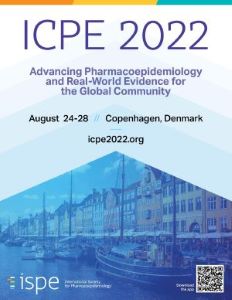Back
Oral Presentation
Drug Utilization Research
Session: Use it or Lose Out: Trends in Anti-cancer and Biologic Utilization
Trends in Access to Essential Cancer Medicines in Low and Middle Income Countries, 2015-2020
Sunday, August 28, 2022
1:45 PM – 2:00 PM CEST
Location: Congress Hall D5
Publication Number: 260
Background: Despite a growing burden of cancer globally, there is limited information on the availability and use of essential medicines indicated for the treatment of cancer, especially in low and middle income countries (LMICs).
Objectives: The primary objective of this study was to investigate trends in the use of cancer medicines from 2015 to 2020 across 30 LMICs by geographic region before and during the COVID-19 pandemic.
Methods: In this longitudinal trends study, we used pharmaceutical sales data from IQVIA's MIDAS. We analyzed quarterly sales data for cancer medicines between January 1st 2015 to October 31st 2020. Cancer medicines were defined antineoplastic agents, cytotoxic hormonal agents and supportive antineoplastic medicines. For each specific medicine, we also determine whether it is included on the current WHO essential medicines list (EML). Population estimates for each country and region were based on the UN World Population Prospects 2019 report. Average quarterly sales trends of cancer medicines were expressed as standard units (SUs)or tablets per 100,000 inhabitants per day.
Results: In LMICs, the availability of oral cancer medicines increased from 61 SUs per 100,000 persons per day in January to March of 2015 to 88.9 SUs per 100,000 persons per day by October 2020, corresponding to a 44.2% relative increase and was largely driven by the growth in the availability of cytotoxi hormonal agents (28.4 SU to 48.2 SU;P < 0.001). The share of cancer medicines that were included on the EMLs declined from 86.2% to 79.4% (p < 0.001) and was largely driven by declines in cytotoxic hormonal agents designated as essential medicines (76.8% to 66.2%; p< 0.,001). The availability of cancer medicines varied substantially across regions and countries, ranging from 1.5 SU per 100,000 persons in Argentina to 510 SU per 100,000 persons in Romania in 2019. Several countries experienced substantial declines in cytotoxic hormonal agents, including Kazakhstan (29 to 8.5 per-capita; p< 0.001) and Belarus (116 vs. 27 per-capita; p< 0.001) (others experienced a substantial increases (Tunisia, Mexico, India, Sri Lanka and Peru). Although the use of cytotoxic hormonal agents not designated as essential medicines by WHO, such as letrozole, has increased substantially in LMICs, many countries continue to lack access to these cancer medicines.
Conclusions: Access to oral cancer medicines has steadily increased in LMICs over a 5 year period, yet several countries have experienced a decline, including those with growing cancer burden. Efforts to increase access to cancer medicines should consider expanding the EMLs list to include approved agents increasingly used for the treatment of cancer, particularly for breast cancer.
Objectives: The primary objective of this study was to investigate trends in the use of cancer medicines from 2015 to 2020 across 30 LMICs by geographic region before and during the COVID-19 pandemic.
Methods: In this longitudinal trends study, we used pharmaceutical sales data from IQVIA's MIDAS. We analyzed quarterly sales data for cancer medicines between January 1st 2015 to October 31st 2020. Cancer medicines were defined antineoplastic agents, cytotoxic hormonal agents and supportive antineoplastic medicines. For each specific medicine, we also determine whether it is included on the current WHO essential medicines list (EML). Population estimates for each country and region were based on the UN World Population Prospects 2019 report. Average quarterly sales trends of cancer medicines were expressed as standard units (SUs)or tablets per 100,000 inhabitants per day.
Results: In LMICs, the availability of oral cancer medicines increased from 61 SUs per 100,000 persons per day in January to March of 2015 to 88.9 SUs per 100,000 persons per day by October 2020, corresponding to a 44.2% relative increase and was largely driven by the growth in the availability of cytotoxi hormonal agents (28.4 SU to 48.2 SU;P < 0.001). The share of cancer medicines that were included on the EMLs declined from 86.2% to 79.4% (p < 0.001) and was largely driven by declines in cytotoxic hormonal agents designated as essential medicines (76.8% to 66.2%; p< 0.,001). The availability of cancer medicines varied substantially across regions and countries, ranging from 1.5 SU per 100,000 persons in Argentina to 510 SU per 100,000 persons in Romania in 2019. Several countries experienced substantial declines in cytotoxic hormonal agents, including Kazakhstan (29 to 8.5 per-capita; p< 0.001) and Belarus (116 vs. 27 per-capita; p< 0.001) (others experienced a substantial increases (Tunisia, Mexico, India, Sri Lanka and Peru). Although the use of cytotoxic hormonal agents not designated as essential medicines by WHO, such as letrozole, has increased substantially in LMICs, many countries continue to lack access to these cancer medicines.
Conclusions: Access to oral cancer medicines has steadily increased in LMICs over a 5 year period, yet several countries have experienced a decline, including those with growing cancer burden. Efforts to increase access to cancer medicines should consider expanding the EMLs list to include approved agents increasingly used for the treatment of cancer, particularly for breast cancer.
- DQ
- AS
Andrew Shooshtari
University of Southern California
Los Angeles, CA, United States - jC
jonathan Cohen
University of Southern California, CA, United States
- PY
Prashant Yadav
Center for Global Development

